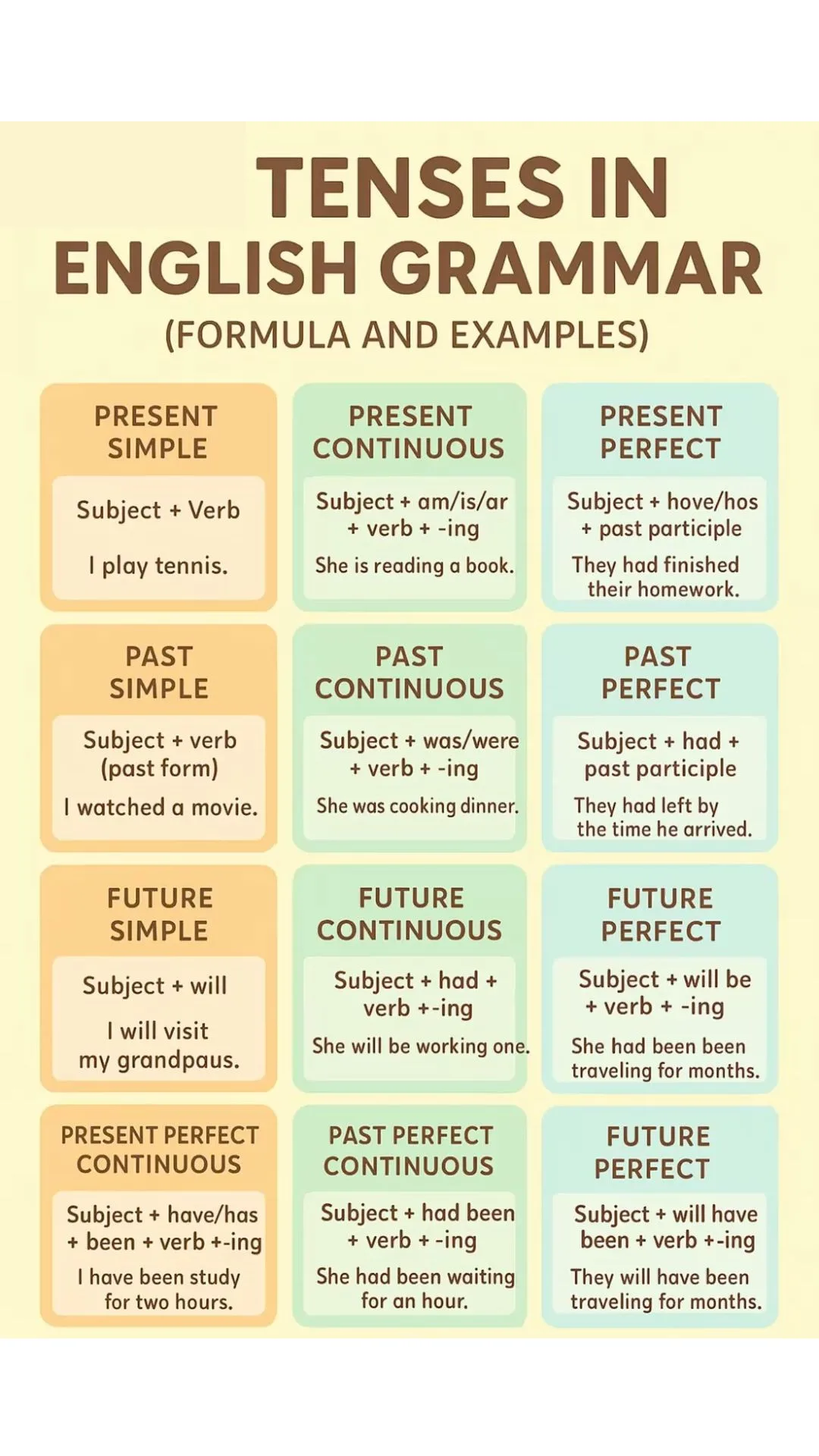Communicating in English requires a solid understanding of all 12 verb tenses. There really isn't another way around it. It's comparable to being able to cook an egg as a chef: it’s unequivocal to be proficient–we must know how to use them.
Grammarflex’s guide on verb tenses
This article is our overview (and magnus opus) on what verb tenses are, verb conjugations and key takeaways on how we use each of the 12 verb tenses in English.
We’ve worked hard and rigorously on the contents of this guide, and sincerely hope it helps improve your understanding of verbs and their role!
What are verb tenses in grammar?
To put it matter-of-factly: a verb’s tense indicates when it took place and for how long. Verb conjugation is simply the change verbs undergo in spelling and pronunciation to reflect the tense.
Tense comes from the Latin word, tempus, meaning “a portion of time”. Just like the Latin origin says, think of a tense as a slice in time when something happens, happened in the past, or will happen in the future.
English's 12 verb tenses
- The simple present
- Present continuous or progressive
- Present perfect
- The present perfect continuous
- Simple past
- Past continuous or progressive
- Past perfect
- Past perfect continuous
- Future simple
- Future continuous or progressive
- Future perfect
- Future perfect continuous/progressive

The present tense
The simple present
The simple present or present simple tense uses the infinitive verb form, which is the spelling you see when you go to look it up in a dictionary. This form of the present can express or communicate—
- Routine habits, occurences, and events: I drive to work every day; She reads in the evening; They visit Crater Lake every summer.
- General truths and facts: Octopi have 3 hearts; Sir Keir Starmer is the Prime Minister of the UK; To err is human.
In the third-person present singular, we add an -s or -es to the end of the verb:
- He writes in his journal before bed.
- She sleeps with the lamp on.
- Fortune favours the bold.
Present continuous or progressive
The present continuous or progressive tense (or aspect) show actions that occur in the present moment, usually at the time of speaking. To form the present perfect, use a form of "to be" + present participle [verb form ending in -ing]. See the following uses and corresponding sentence examples:
- I am studying for my exam.
- He is speaking.
- They're watching TV.
- We are eating dinner.
Present perfect
The present perfect tense relates the past to the present in a particular way. To write in the present perfect, combine have/has with the past participle.
The present perfect continuous
The present perfect continuous tense describes an action that started in the past, continues into the present, and may continue into the future.
The past tense
Just like the present tense includes four different grammatical aspects, the past tense does the same:
Simple past
The past simple tense, or simple past, is the verb construction that ends in -ed for regular verbs, and something other than -ed for irregular verbs; e.g., wrote, played, hid. We use this tense to refer to completed actions or events that happened at a time before now.
Past continuous or progressive
Past perfect
Past perfect continuous
Forms of the future tense
Future simple
The simple future tense talks about something that hasn’t happened yet, but will occur in the future. The simple future is often formed with will + [root verb].
Future continuous or progressive
Future perfect
Future perfect continuous/progressive
Depict actions that will be completed at a certain time in the future. The future continuous describes actions that will be ongoing at a time in the future, and the future perfect continuous shows an acton as ongoing over a period of time (in the future) that will end in the future. This tense isn’t especially common in writing or speech.
Practice: Verb tenses
Now that I've the movie, I agree it's one of the greatest of all time!
The sentence, I wash my hair every morning, uses which verb tense?
The sentence, She will be going to the airport later this afternoon, uses which tense?
He the students homework packets for the weekend.
She usually to the gym twice a week.
While the professor was lecturing, the student detailed notes.
The sentence, He studies engineering, uses which verb tense?
The present continuous verb ending is -en, -ed, or -own.
Many major cities significantly over the past decade.
I was reading when the phone .
FAQs
What are verb tenses in grammar?
How many total verb tenses are there?
What are the three main verb tenses?
What is verb conjugation?
How are simple verb tenses formed?
Sources
-
Tense origin: etymonline, tempus.
-
P.C. Wren and Martin’s English Grammar and Composition.
Advertisement








.webp&w=3840&q=75)